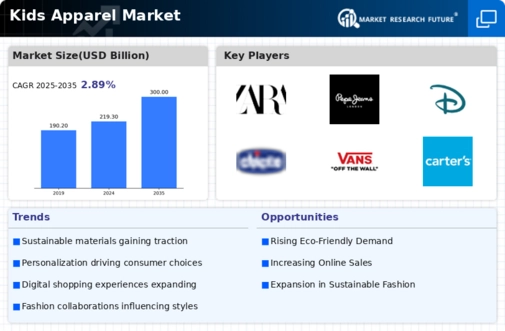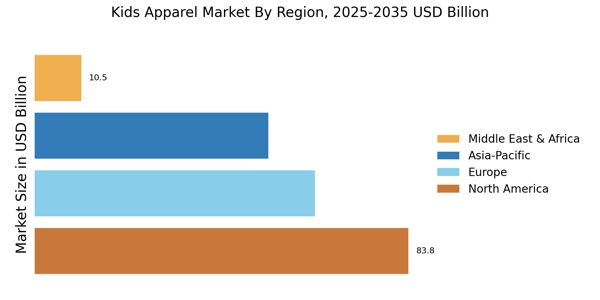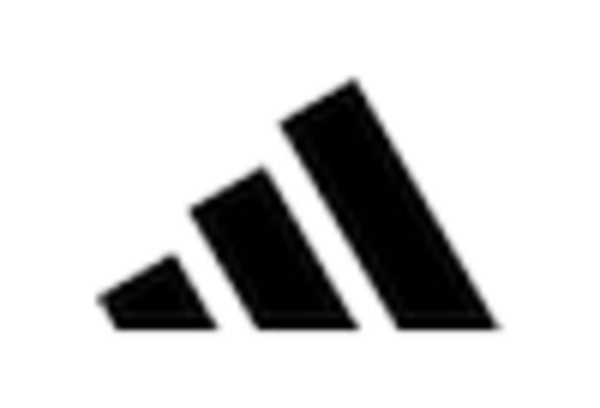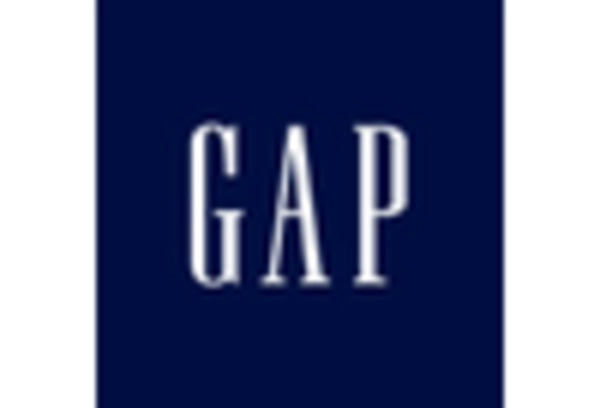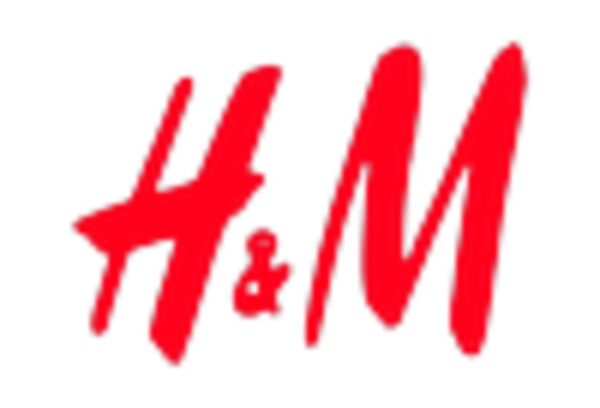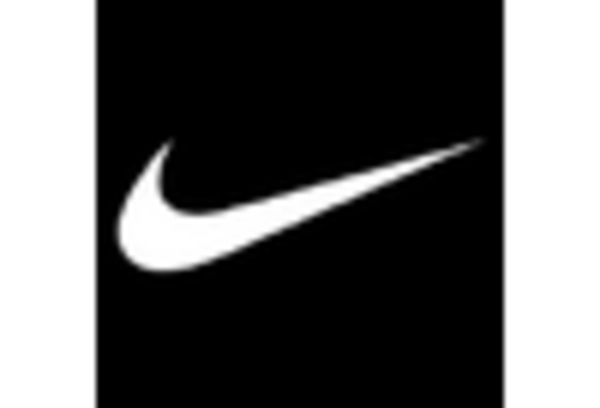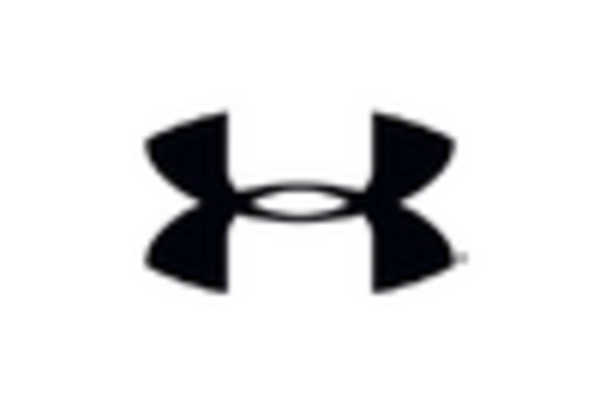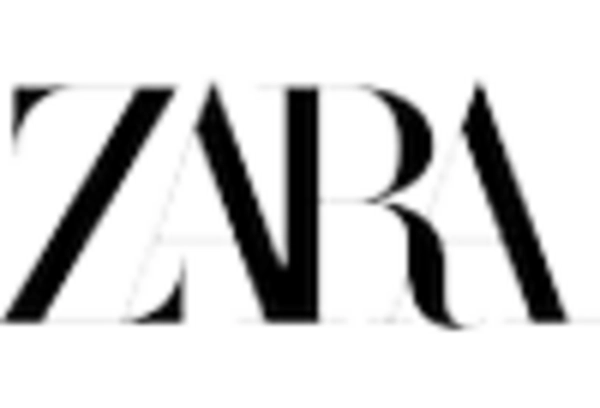E-commerce Growth
The rapid growth of e-commerce is significantly impacting the Kids Apparel Market. With the increasing penetration of the internet and mobile devices, parents are increasingly turning to online platforms for their shopping needs. Data indicates that online sales of children's clothing have surged, with e-commerce accounting for over 30% of total sales in the sector. This shift is driven by the convenience of online shopping, as well as the ability to access a wider variety of brands and styles. Retailers that invest in robust online platforms and user-friendly interfaces are likely to capture a larger share of the market. The Kids Apparel Market is thus witnessing a transformation, as traditional brick-and-mortar stores adapt to the digital landscape, offering seamless omnichannel experiences to meet consumer demands.
Sustainability Initiatives
The Kids Apparel Market is increasingly influenced by sustainability initiatives. Parents are becoming more conscious of the environmental impact of clothing production, leading to a demand for eco-friendly materials and ethical manufacturing practices. Brands that prioritize sustainability are likely to attract a growing segment of environmentally aware consumers. According to recent data, approximately 60% of parents express a preference for sustainable clothing options for their children. This trend is not merely a passing phase; it appears to be reshaping the industry landscape, as companies that fail to adapt may find themselves at a competitive disadvantage. The Kids Apparel Market is thus witnessing a shift towards organic fabrics, recycled materials, and transparent supply chains, which could potentially redefine consumer expectations and brand loyalty.
Technological Advancements
Technological advancements are playing a pivotal role in the evolution of the Kids Apparel Market. Innovations such as 3D printing and smart textiles are revolutionizing how clothing is designed and produced. For instance, 3D printing allows for rapid prototyping and customization, enabling brands to offer unique designs that cater to individual preferences. Furthermore, smart textiles equipped with sensors can enhance the functionality of kids' clothing, providing features such as temperature regulation and moisture-wicking. The integration of technology not only streamlines production processes but also enhances the overall consumer experience. As a result, companies that embrace these advancements may gain a competitive edge in the Kids Apparel Market, appealing to tech-savvy parents who seek innovative solutions for their children's clothing needs.
Health and Safety Awareness
Health and safety awareness is becoming increasingly paramount in the Kids Apparel Market. Parents are more vigilant about the materials used in their children's clothing, seeking garments that are free from harmful chemicals and allergens. This heightened awareness is prompting brands to prioritize safety standards and transparency in their production processes. Recent surveys indicate that nearly 70% of parents consider safety features, such as flame resistance and non-toxic dyes, as critical factors when purchasing kids' apparel. Consequently, companies that emphasize health and safety in their product offerings may enhance their reputation and foster consumer trust. The Kids Apparel Market is thus evolving to meet these expectations, with brands investing in research and development to create safer, healthier clothing options for children.
Fashion Trends and Influencer Impact
Fashion trends and the influence of social media are shaping the Kids Apparel Market in unprecedented ways. Children are increasingly exposed to fashion through various media channels, leading to a demand for trendy and stylish clothing. Influencers and celebrities play a crucial role in this dynamic, as their endorsements can significantly sway purchasing decisions among parents. Data suggests that nearly 50% of parents are influenced by social media trends when selecting apparel for their children. This phenomenon is prompting brands to collaborate with influencers and create collections that resonate with current fashion trends. The Kids Apparel Market is thus adapting to this cultural shift, as companies strive to remain relevant and appealing to a generation that values style and individuality.


